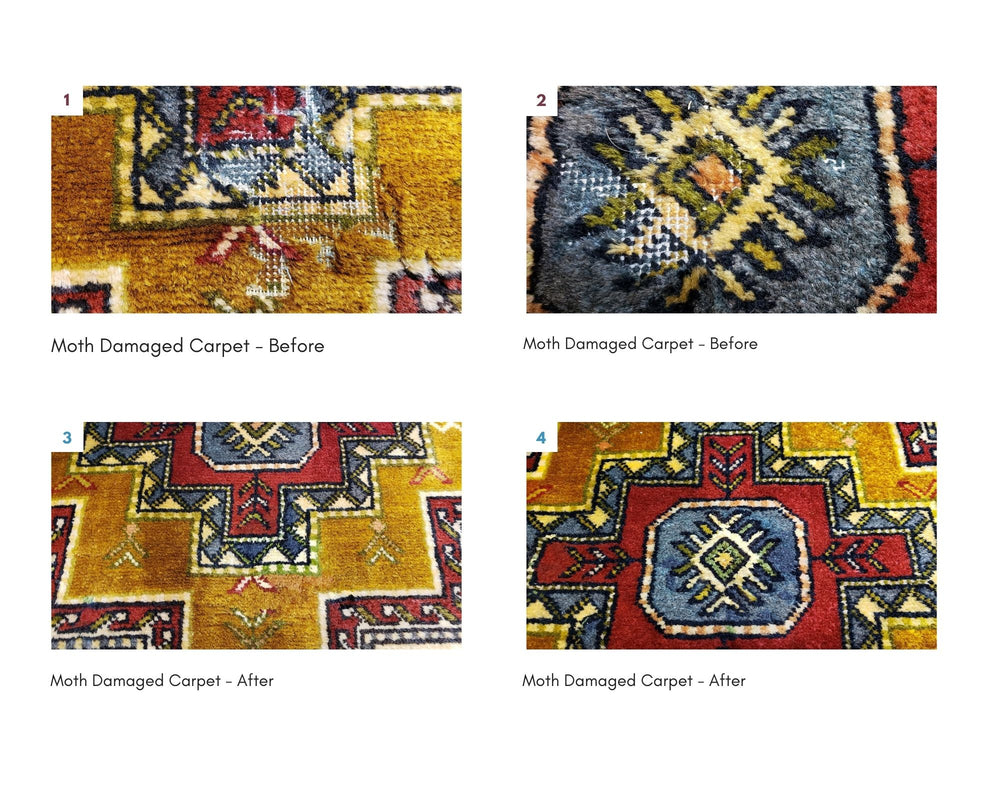Rugs & Moth Damage: What to Look For


Flying moths do not eat at rugs but just one female moth can lay hundreds of eggs – these eggs hatch into larvae and these pests consume the wool and silk fibers of your rug.
This damage isn’t difficult to repair but reweaving a large area of the rug can be quite costly.

Interestingly enough, generally moth larvae will prefer the taste of one yarn color over another, therefore the bare spots may involve specific colors being eaten away.
White, slender, worm-like larvae can often be seen just after hatching, before they’ve built their cocoons, and they are responsible for eating at the wool.
This damage is due to the larvae having chewed through yarn overcastings or bindings
These particles can be found down in the pile of the rug and has a tan or brown color. They have a granular look, are regular in size, and is the excretion of the larvae.
These particles can be found down in the pile of the rug and has a tan or brown color. They have a granular look, are regular in size, and is the excretion of the larvae.
White, silky strands covering patches of the rug’s pile, indicating a bad infestation.